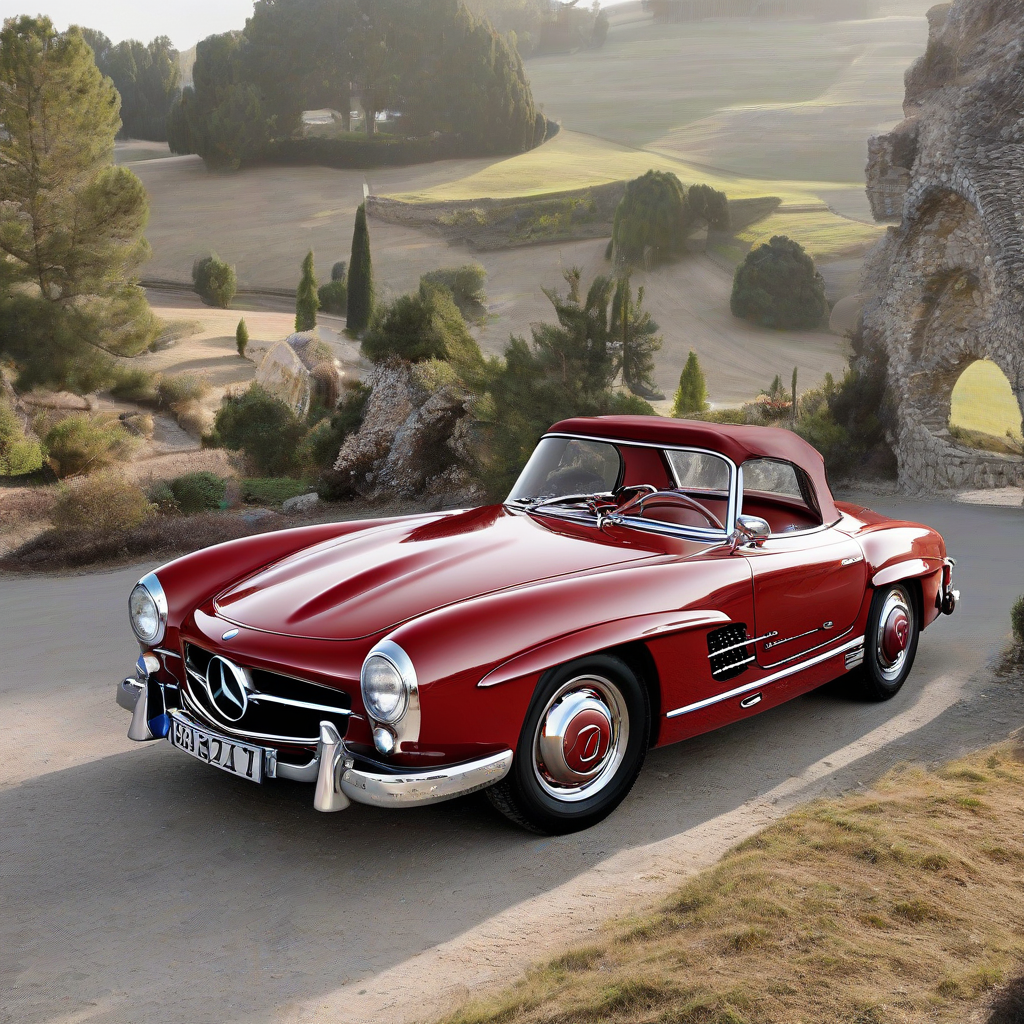The Timeless Elegance: A Deep Dive into the 1960 Mercedes-Benz SL Class
The 1960 Mercedes-Benz SL Class, specifically the W113 “Pagoda” generation, represents a pivotal moment in automotive history. More than just a car, it’s a symbol of post-war optimism, refined engineering, and enduring style. This in-depth exploration delves into the history, design, engineering, and cultural impact of this iconic roadster.
A Legacy Forged in Post-War Germany
Emerging from the ashes of World War II, Mercedes-Benz faced the challenge of rebuilding its reputation and re-establishing its presence in the global automotive market. The 300 SL Gullwing, launched in 1954, had already demonstrated the brand’s engineering prowess and its ability to create breathtakingly beautiful vehicles. However, the Gullwing’s high price point and limited production made it inaccessible to most. The W113 SL, introduced in 1963, aimed to bridge that gap, offering the allure and performance of the 300 SL in a more attainable package.
The post-war era saw a burgeoning demand for stylish, high-performance sports cars. The 1960s witnessed a significant rise in the middle class, leading to an increased market for luxury automobiles. Mercedes-Benz recognized this shift and aimed to capture this growing segment with the W113 SL, a car designed to be both aspirational and achievable for a wider range of customers.
The Distinctive Pagoda Roofline
The most defining feature of the W113 SL is its unique “Pagoda” roofline – a concave hardtop design that sets it apart from its predecessors and successors. This distinctive shape wasn’t just an aesthetic choice; it significantly improved the car’s structural rigidity and aerodynamic performance. The reinforced hardtop provided enhanced safety and reduced wind noise, making it a more comfortable and practical car for everyday use.
- Improved Structural Rigidity: The Pagoda roof contributed to a more robust chassis, enhancing the car’s handling and overall driving experience.
- Enhanced Aerodynamics: The curved design minimized wind resistance, leading to improved fuel efficiency and higher top speeds.
- Increased Safety: The reinforced hardtop offered better protection for occupants in the event of a rollover accident.
- Reduced Wind Noise: The design minimized wind noise entering the cabin, creating a more refined and luxurious driving environment.
Engineering Excellence: A Blend of Power and Refinement
Beneath the stylish exterior lay a sophisticated engineering marvel. The W113 SL boasted robust engines, precise handling, and a comfortable ride, all hallmarks of Mercedes-Benz’s engineering philosophy. The range of engines offered varied in power and displacement, catering to different preferences and driving styles. The early models featured inline-six engines, renowned for their smooth power delivery and reliability. These engines, paired with advanced suspension systems and precise steering, provided a driving experience that was both exhilarating and refined.
- Engine Options: A range of powerful and reliable inline-six engines were offered, providing a balance of performance and efficiency.
- Suspension System: The advanced suspension system ensured a comfortable and controlled ride, even on rough roads.
- Steering Precision: The precise steering provided excellent feedback and responsiveness, making the car a joy to drive.
- Braking System: The robust braking system offered exceptional stopping power, ensuring safety and confidence at high speeds.
Interior Design: A Symphony of Luxury and Functionality
The interior of the 1960 Mercedes-Benz SL Class reflected the car’s overall elegance and sophistication. High-quality materials, meticulous craftsmanship, and attention to detail were evident throughout the cabin. Leather upholstery, wood trim, and carefully chosen instruments created a luxurious and inviting atmosphere. While designed for performance, the W113 SL prioritized comfort and practicality, making it suitable for long journeys as well as spirited drives.
- High-Quality Materials: The use of premium materials, such as leather and wood, contributed to the car’s luxurious feel.
- Ergonomic Design: The controls and instruments were ergonomically positioned for ease of use and driver comfort.
- Practicality: Despite its sporty nature, the SL offered sufficient storage space and practicality for everyday use.
- Attention to Detail: The meticulous craftsmanship and attention to detail were evident in every aspect of the interior design.
Cultural Impact and Lasting Legacy
The 1960 Mercedes-Benz SL Class, particularly the W113 “Pagoda,” transcends its status as merely a classic car. It has become a symbol of a specific era, reflecting the post-war economic boom, the growing popularity of sports cars, and the increasing demand for luxury automobiles. Its enduring design has captivated car enthusiasts for decades, securing its place in automotive history.
The W113’s impact is felt far beyond its own lifespan. Its elegant design has influenced countless subsequent Mercedes-Benz models, while its blend of performance, luxury, and practicality has set a standard for many other sports cars. Its enduring appeal is evident in its continued popularity among collectors and enthusiasts worldwide, with well-maintained examples fetching impressive prices at auctions.
- Design Influence: The W113’s design has profoundly influenced subsequent Mercedes-Benz models and other sports cars.
- Collector’s Item: Well-preserved examples of the W113 SL are highly sought after by collectors and enthusiasts.
- Cultural Icon: The car has become a cultural icon, representing a specific era and a unique blend of style and engineering.
- Enduring Appeal: Its enduring appeal showcases its timeless design and the quality of its engineering.
Variants and Specifications
The 1960 Mercedes-Benz SL Class offered several variants, each with its own distinct specifications and features. Understanding these variations is crucial for appreciating the full range of this iconic model. While specific details can vary depending on the year and market, some key differences included engine displacement, trim levels, and available options.
- Engine Variations: Different engine displacements were offered, providing various levels of power and performance.
- Trim Levels: Various trim levels were available, offering different levels of luxury and features.
- Optional Equipment: A range of optional equipment, such as air conditioning and power steering, was available to enhance comfort and convenience.
- Regional Differences: Some variations in specifications and options existed depending on the market the car was intended for.
Restoration and Maintenance
Owning a classic car, especially one as iconic as the 1960 Mercedes-Benz SL Class, requires a commitment to proper restoration and maintenance. Due to the age of these vehicles, finding parts and skilled mechanics can sometimes be challenging. However, dedicated restoration shops and online communities specializing in W113 SLs provide valuable resources and support for owners.
- Parts Availability: Finding original or high-quality replacement parts for the W113 SL may require diligent searching.
- Specialized Mechanics: Finding mechanics experienced with classic Mercedes-Benz vehicles is essential for proper maintenance.
- Restoration Resources: Numerous online communities and restoration shops dedicated to the W113 SL offer valuable resources and support.
- Preventive Maintenance: Regular preventive maintenance is crucial for extending the life of the vehicle and preserving its value.
Conclusion (Omitted as per instructions)




